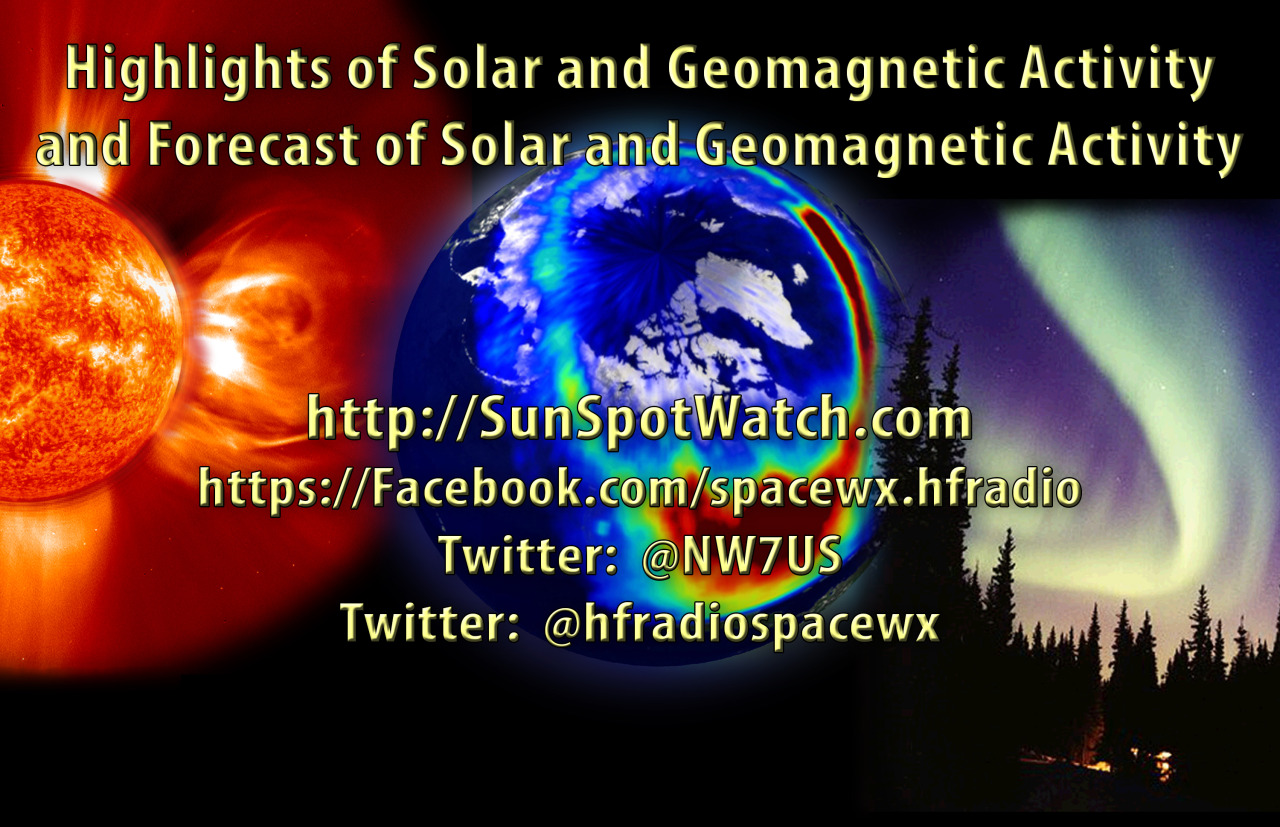 Weekly Propagation Summary – 2016 Apr 11 16:10 UTC
Weekly Propagation Summary – 2016 Apr 11 16:10 UTC
Here is this week’s space weather and geophysical report, issued 2016 Apr 11 0439 UTC.
Highlights of Solar and Geomagnetic Activity 04 – 10 April 2016
Solar activity was at very low levels on 04-05 April with low levels observed from 06-10 April as Region 2529 (N09, L=341, class/area, Eki/820 on 10 April) began its transit across the solar disk. The region emerged as a large bipolar group that produced 15 low level C-class flares during the period. The largest flare was a long-duration C2 at 09/1342 UTC, however it also produced another long-duration C1 flare at 10/0934 UTC. Other activity included a 10 degree filament eruption, centered near N18E29, that erupted beginning at approximately 10/1000 UTC. An associated CME was observed off the NE limb at 10/1100 UTC. The CME is currently being analyzed, however it is likely that little to no impacts will occur given its location and direction.
No proton events were observed at geosynchronous orbit.
The greater than 2 MeV electron flux at geosynchronous orbit was at high levels from 04-07 April with normal levels observed from 08-10 April. The highest flux value observed for the period was 3,924 pfu at 05/1605 UTC.
Geomagnetic field activity ranged from quiet to (G1) minor storm levels. Solar wind parameters were at mostly nominal levels through the period until a solar sector boundary crossing (SSBC) occurred around 07/1737 UTC. During this time, total field increased to a maximum of 13 nT while the Bz component deflected southward for approximately 8 hours reaching a maximum of -13 nT. The geomagnetic field responded with G1-minor storm levels late on 07 April through early on 08 April.
Forecast of Solar and Geomagnetic Activity 11 April – 07 May 2016
Solar activity is expected to be at low levels with a slight chance for M-class (R1-R2, Minor-Moderate) flares until Region 2529 rotates off the NW limb on 21 April. Very low levels are expected from 22 April through 03 May. Low levels are expected once again from 04-07 May with the return of Region 2529.
No proton events are expected at geosynchronous orbit.
The greater than 2 MeV electron flux at geosynchronous orbit is expected to be at high levels on 15-18, 24-28, and 30 April – 02 May due to coronal hole high speed stream (CH HSS) influence. Normal to moderate levels are expected for the remainder of the outlook period.
Geomagnetic field activity is expected to be at unsettled to active levels on 12-15, 23-26, and 29-30 April with G1-minor storm levels likely on 13-14 and 29 April due to recurrent CH HSS activity. Unsettled to active levels are also likely on 04 May due to activity associated with an SSBC.
Don’t forget to visit our live space weather and radio propagation web site, at: http://SunSpotWatch.com/
Live Aurora mapping is at http://aurora.sunspotwatch.com/
If you are on Twitter, please follow these two users: + https://Twitter.com/NW7US + https://Twitter.com/hfradiospacewx
Get the space weather and radio propagation self-study course, today. Visit http://nw7us.us/swc for the latest sale and for more information!
Check out the stunning view of our Sun in action, as seen during the last five years with the Solar Dynamics Observatory (SDO): https://www.youtube.com/watch?v=zXN-MdoGM9g
We’re on Facebook: http://NW7US.us/swhfr














